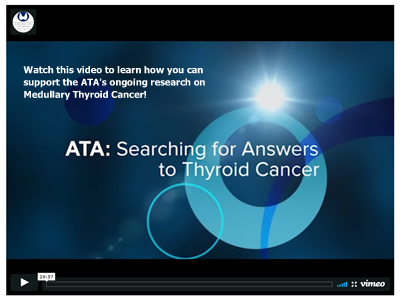Clinical Thyroidology for the Public summarizes selected research studies discussed in the previous month’s issue of Clinical Thyroidology, an official publication of the American Thyroid Association. Editor-in-chief, Alan Farwell, MD, FACE
Volume 10 Issue 10

Available in pdf format for saving and printing and Web page format for viewing online
PDF Format for Saving and Printing
Clinical Thyroidology for the Public Volume 10 Issue 10 (PDF file, 8.3 MB)
TABLE OF CONTENTS – Web Format
THYROID CANCER Environmental toxicants and thyroid cancer
There has been a steady rise of thyroid cancers over the past several decades. Some of this is likely due to the increased use of imaging such as CT scans. However, it is likely that other factors play a role as well, including chemicals in our environment. This study was performed to examine whether exposure to flame retardant chemicals in the environment might be associated with the rise in thyroid cancer.
Hoffman K et al.. Exposure to flame retardant chemicals and occurrence and severity of papillary thyroid cancer: A casecontrol study. Environ Int 2017 Oct;107:235-242.
(PDF File for saving and printing, 4.9 MB)
THYROID CANCER How often does a thyroid cancer patient need to undergo surveillance with cervical ultrasound?
Ultrasound is a standard method of evaluating a thyroid cancer patient over time. Current guidelines released by expert groups recommend ultrasounds of the neck to be done at 6-12 months after surgery and then periodically or at yearly intervals. However, the evidence for recommending ultrasounds at these short intervals is not particularly strong. The aim of this study was to determine the best interval to perform ultrasounds after surgery for thyroid cancer
Ryoo I et al Analysis of postoperative ultrasonography surveillance after total thyroidectomy in patients with papillary thyroid carcinoma: a multicenter study. Acta Radiol. January 1, 2017 [Epub ahead of print]. doi:10.1177/0284185117700448
(PDF File for saving and printing, 4.9 MB)
THYROID CANCER Is I-124 PET/CT useful in identifying thyroid cancer that may take up radioactive iodine?
In patients who have had surgery for thyroid cancer, diagnostic whole body radioactive iodine (I-123 or I-131) scans are used to look for residual normal thyroid tissue or recurrent thyroid cancer that may be treated with radioactive iodine therapy. In this study, a systematic review of the literature and pooled analysis of published data was performed, to determine how effective I-124 PET/CT is in identifying thyroid cancer lesions that may be able to be treated with radioactive iodine, as confirmed by a posttherapy scan (after radioactive iodine treatment).
Santhanam P et al. Utility of I-124 PET/CT in identifying radioiodine avid lesions in differentiated thyroid cancer: a systematic review and meta-analysis. Clin Endocrinol (Oxf ) 2017 May;86:645-51. Epub February 28, 2017.
(PDF File for saving and printing, 5.4 MB)
THYROID CANCER Distant metastases from low risk thyroid cancer are rare and associated with RAS and/or TERT Mutations
Spread of thyroid cancer outside the neck is rare, occurring in between 1.2 and 13% of patients. While most patients who develop distant metastases from their thyroid cancer have evidence of aggressive features noted after surgery, some are low risk cancers. The goal of the study is done to evaluate the features of low risk papillary thyroid cancer that develops distant metastases.
Xu B et al. Primary thyroid carcinoma with low-risk histology and distant metastases: clinicopathologic and molecular characteristics. Thyroid. May 2017, 27(5): 632-640.
(PDF File for saving and printing, 5 MB)
THYROID AND PREGNANCY Pregnant women of African descent have a lower TSH concentration and a lower rate of thyroid autoimmunity
Thyroid hormone levels in the mother often change during pregnancy, with the serum level of TSH generally being lower in pregnancy. Previous research has shown differences in the range of thyroid tests and TPO antibodies between healthy women of different ethnic groups. This study has been done to investigate the range of TSH in pregnant women of different ethnic groups.
M Collares F. Maternal thyroid function, prepregnancy obesity and gestational weight gain— the Generation R Study: a prospective cohort study. Clin Endocrinol (Oxf ). June 30, 2017 [Epub ahead of print].
(PDF File for saving and printing, 5 MB)




